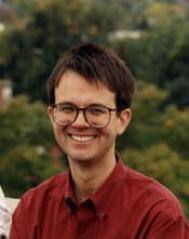Apollo 17 was the final mission of the United States' Apollo lunar landing program, and was the sixth landing of humans on the Moon. Launched at 12:33 AM Eastern Standard Time (EST) on December 7, 1972, with a three-member crew consisting of Commander Eugene Cernan, Command Module Pilot Ronald Evans, and Lunar Module Pilot Harrison Schmitt, Apollo 17 remains the most recent manned Moon landing and the most recent crewed flight beyond low Earth orbit. After Apollo 17, extra Apollo spacecraft were used in the Skylab and Apollo–Soyuz Test Project programs.
Apollo 17 was the sixth Apollo lunar landing, the first night launch of a U.S. human spaceflight and the final crewed launch of a Saturn V rocket. It was a "J-type mission," which included a three-day lunar surface stay, extended scientific capability, and the third Lunar Roving Vehicle (LRV). While Evans remained in lunar orbit above in the Command/Service Module (CSM). Cernan and Schmitt spent just over three days on the lunar surface in the Taurus-Littrow valley, conducting three periods of extra-vehicular activity, or moonwalks, during which they collected lunar samples and deployed scientific instruments. Cernan, Evans, and Schmitt returned to Earth on December 19 after an approximately 12-day mission.
The decision to land in the Taurus-Littrow valley was made with the primary objectives for Apollo 17 in mind: to sample lunar highland material older than the impact that formed Mare Imbrium and investigating the possibility of relatively young volcanic activity in the same vicinity. Taurus-Littrow was selected with the prospects of finding highland material in the valley's north and south walls and the possibility that several craters in the valley surrounded by dark material could be linked to volcanic activity.
Apollo 17 also broke several records set by previous flights, including the longest manned lunar landing flight; the longest total lunar surface extravehicular activities; the largest lunar sample return, and the longest time in lunar orbit.
Return to Earth
Eugene Cernan and Harrison Schmitt successfully lifted off from the lunar surface in the ascent stage of the Lunar Module on December 14, at 5:55 PM EST. After a successful rendezvous and docking with Ron Evans in the Command/Service Module in orbit, the crew transferred equipment and lunar samples between the LM and the CSM for return to Earth. Following this, the LM ascent stage was sealed off and jettisoned at 1:31 AM on December 15. The ascent stage was then deliberately crashed into the Moon in a collision recorded by seismometers deployed on Apollo 17 and previous Apollo expeditions.
On December 17, during the trip back to Earth, at 3:27 PM EST, Ron Evans successfully conducted a one hour and seven minute spacewalk to retrieve exposed film from the instrument bay on the exterior of the CSM.
On December 19, the crew jettisoned the no-longer-needed Service Module, leaving only the Command Module for return to Earth. The Apollo 17 spacecraft reentered Earth's atmosphere and landed safely in the Pacific Ocean at 2:25 PM, 6.4 kilometers (4.0 mi) from the recovery ship, the USS Ticonderoga. Cernan, Evans and Schmitt were then retrieved by a recovery helicopter and were safely aboard the recovery ship 52 minutes after landing.
(photo source commandmodulepilot.tumblr.com)

